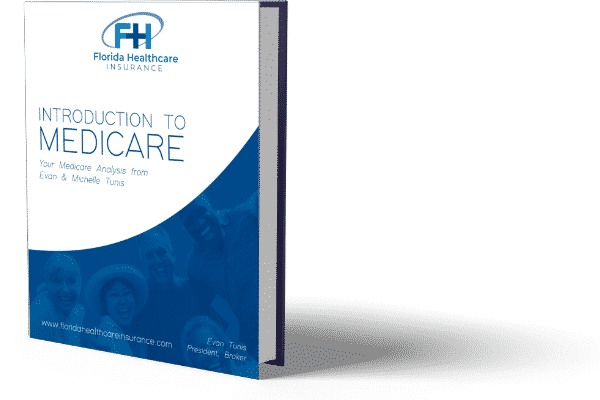When Should I Enroll In Medigap?
When Is The Best Time To Apply for Medicare Supplemental Coverage?
When Should I Enroll In Medigap?
The best time to apply for a Medicare supplement is during your open enrollment window. This window runs for six months from the effective date of your Medicare Part B, or when you turn 65, whichever is later. During this window, the insurance company cannot deny you coverage for any health reason, nor can they raise their rates just on you due to any health conditions.
Some people choose to hold off on their enrollment into Medicare because they have other creditable coverage such as employer group health insurance. For these individuals, their 6-month Medigap open enrollment window will begin later one whenever they enroll in Part B, which is usually when they retire.

Download Our FREE E-Book!
Introduction to Medicare
Your Medicare Analysis from Evan & Michelle Tunis

Medigap plans also come with some very attractive features like no networks, low deductibles, and the freedom to access any provider that accepts Medicare. No referrals, no paperwork from one provider to the next. They offer predictable and comprehensive coverage. Another major difference between MA-PD and Medigap plans is that Medigap plans don’t change year to year and there are no yearly maximum out of pocket costs for the health portion. Not too shabby, right? Another great feature about Medigap plans is they are also guaranteed renewable — meaning the insurance company cannot raise your rates or drop your coverage should any health conditions develop. (Perfect for your “Snowbird” lifestyle!) It’s also well suited for those who have serious health conditions or those who have a lot of medical usage. Based on these benefits, Medigap sounds like a great option, right?
Well, before you jump right into a Medigap plan, consider the following:
One of the down sides of having such great coverage with a Medigap plan is that you’ll pay more for it. Premiums are usually much higher than Medicare Advantage plans because of its extensive coverage. Also, Medigap plans also don’t come with drug coverage (Part D); they are purchased separately, called a “standalone Part D plan”. They go alongside your medical plan, and it gives you an opportunity to best select your plan based on your medication needs. However, If you like the convenience of presenting only one card at your pharmacy, then Medicare Advantage plans may be best for you.
Every year Medicare raises the deductibles and copays that you are responsible for. Your medical plans help to pay for these things for you, and the cost of healthcare also experiences inflation like everything else, so it’s not unusual for Meidgap plans to increase rates from year to year. With most carriers, this rate will occur once a year on your policy anniversary, and depending on when it happens is where one of our expert agents comes in. Don’t worry — we will compare your policy to see if other carriers offer the same plan for less.
Medigap Plan F
- Covers all the gaps in Medicare, including deductibles and copays
- Switching your F carrier means you will have to answer health questions (underwriting)
- The rate you pay for the same benefits can differ from Insurance Company to company, based on zip code, age, smoking, gender, and household discounts
- There is also a special version of this plan called a High Deductible Plan F. This plan often includes very, very low monthly premiums coupled with protection from high out of pocket costs, by an Annual Maximum Out of Pocket, which is set annually by the Internal Revenue Service. With this plan, you can often save a thousand or more dollars a year in those years where you do not require many expensive medical procedures while preserving your ability to see ANY doctor, ANYWHERE, as long as they accept Medicare.
Medicare Plan G
For those eligible for Medicare after January 1, 2020 plan G is likely the best Medicare Supplement available to you.
Plan G covers ALL the holes in Part A and all of Part B with the exception of the annual deductible($203 for 2021). This includes skilled nursing, daily hospital copays, Excess Charges and even provides a Foreign Travel Emergency!
Medicare Plan N
PLAN N is used primarily for price savings!
It is considered statistically the most stable on prices across the board. However, there are some differences in Plan N that need to be understood:
The most important feature to note with Plan N is it does not cover Excess charges. Excess charges are fees above the Medicare-approved payment schedule. A doctor has the option to charge up to 15% ABOVE the Medicare-approved payment schedule. These excess charges are passed on to the patient and billed directly to you after the fact.
Currently these states prohibit excess charges: Connecticut, Massachusetts, Minnesota, New York, Ohio, Pennsylvania, Rhode Island and Vermont.
- Plan covers 100% of the hospitalizations associated with Medicare Part A and covers the 20% completely. Similar to Plan G it does not cover the Part B deductible.
- Copay for a primary care/specialist of up to $20.
- Emergency Room copay of $50.
Get a FREE Medicare Quote!
Florida Medicare Experts Client Testimonials



Florida Medicare Experts Insurance Partners






